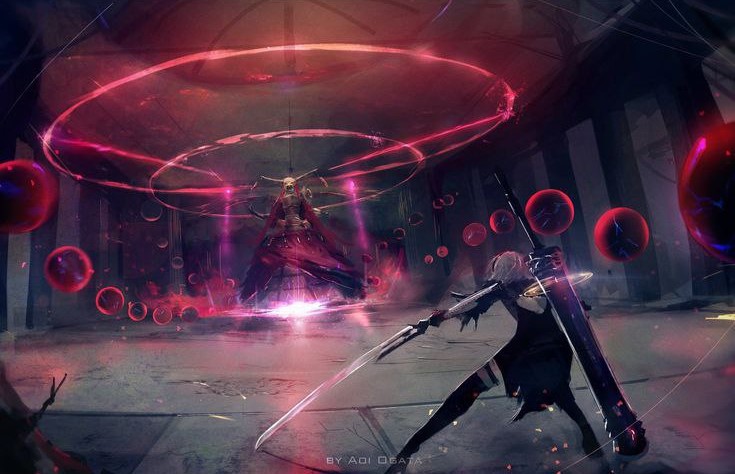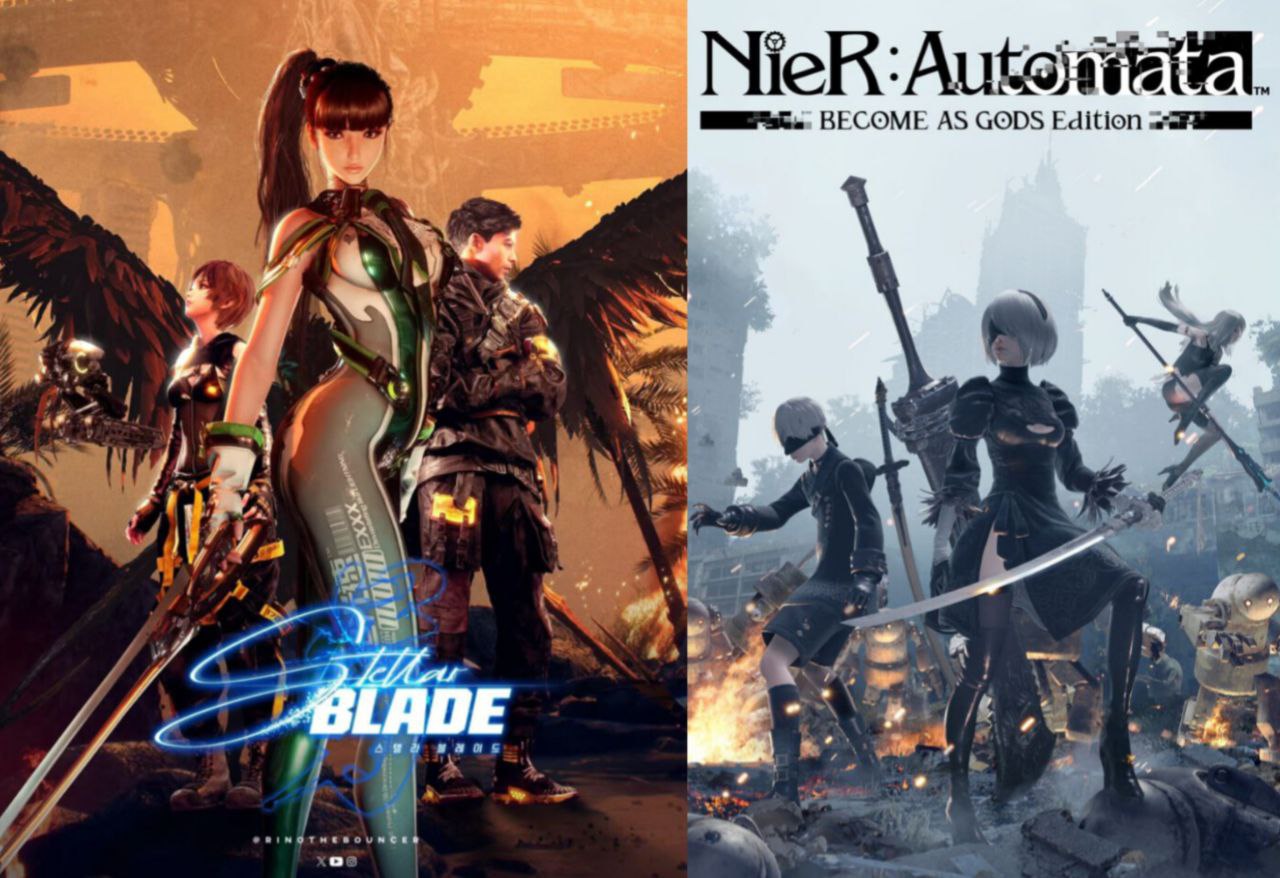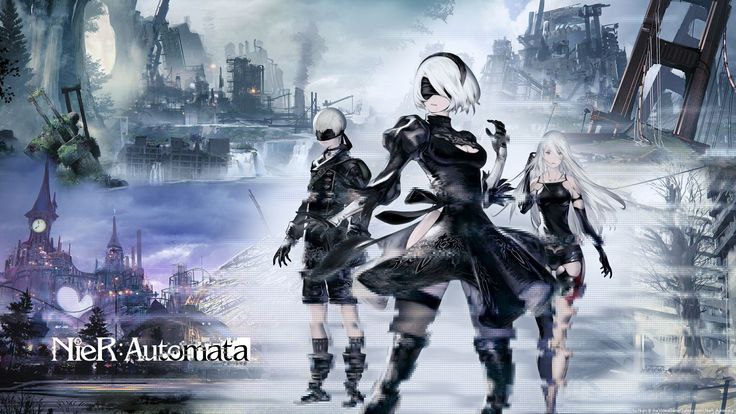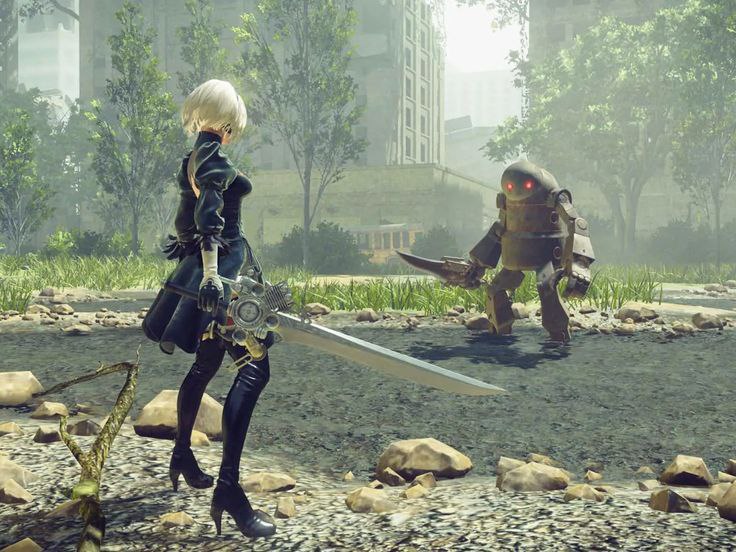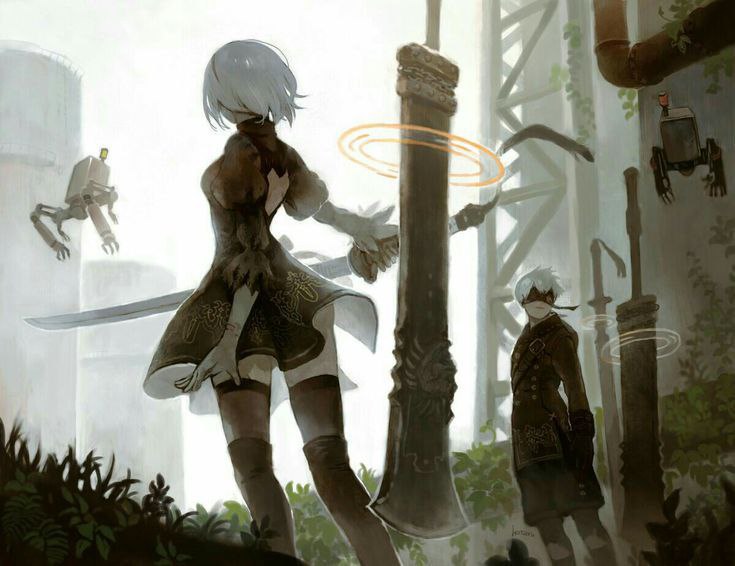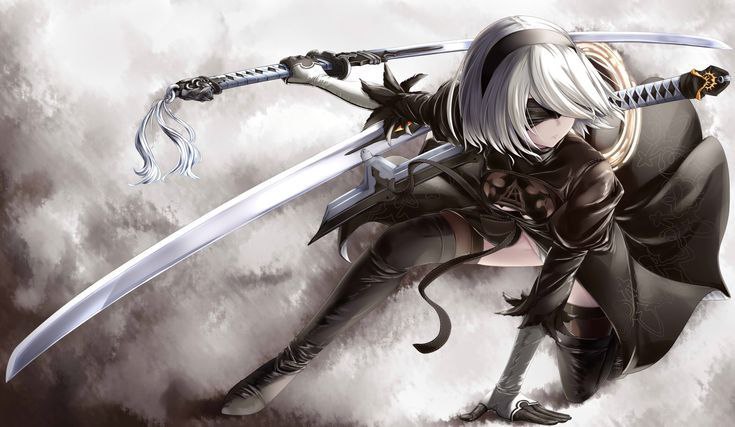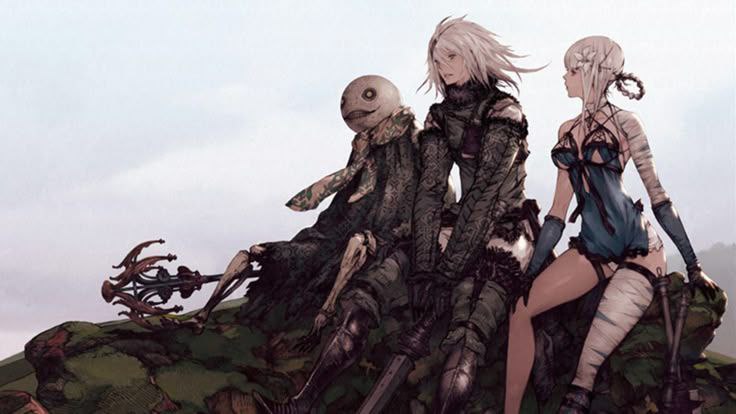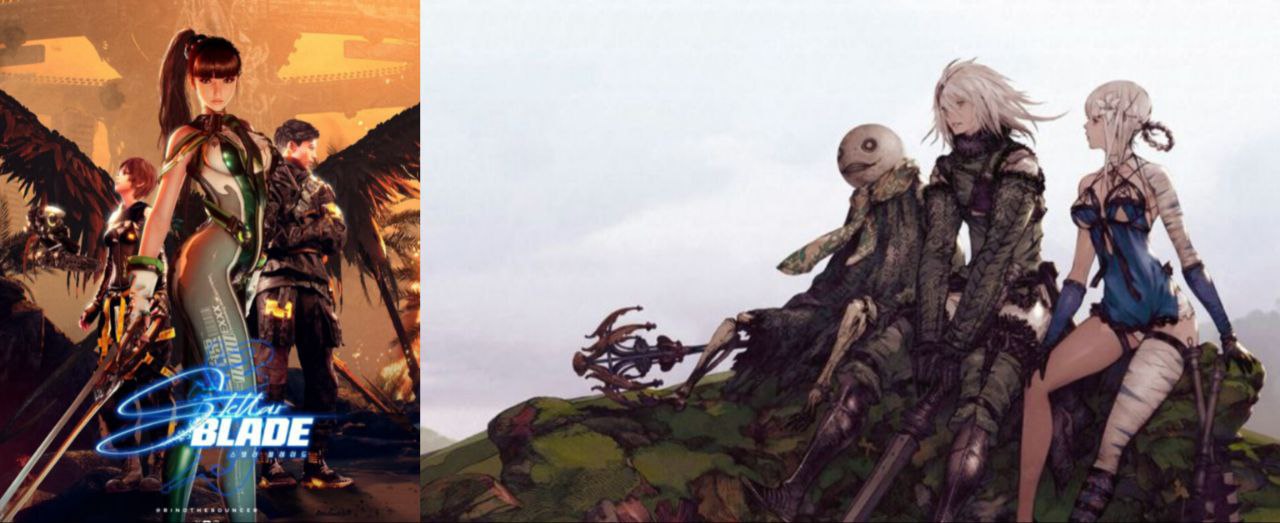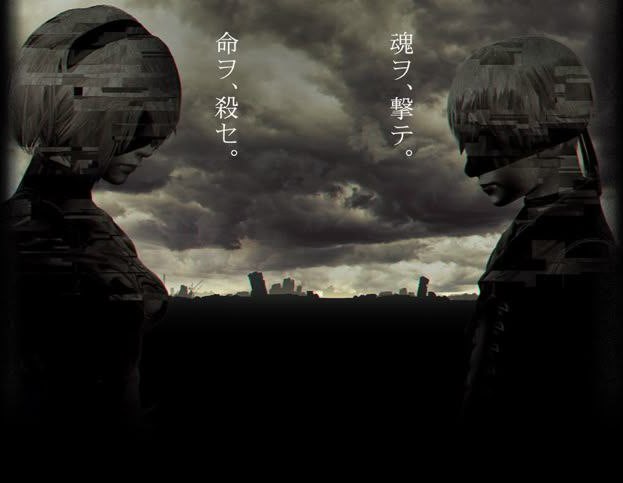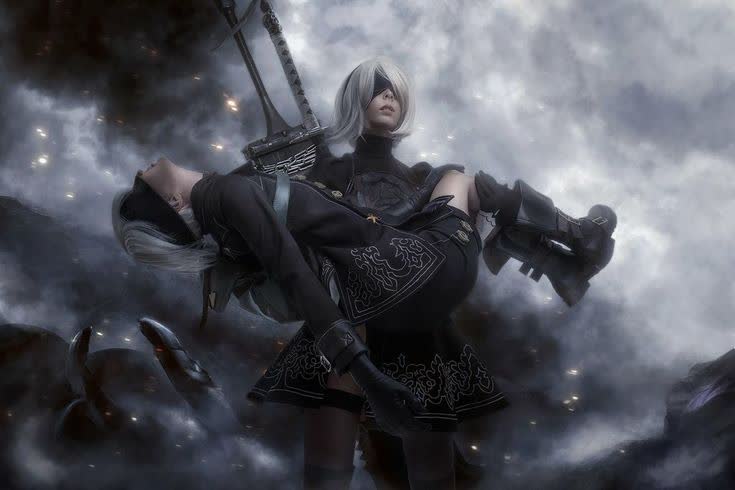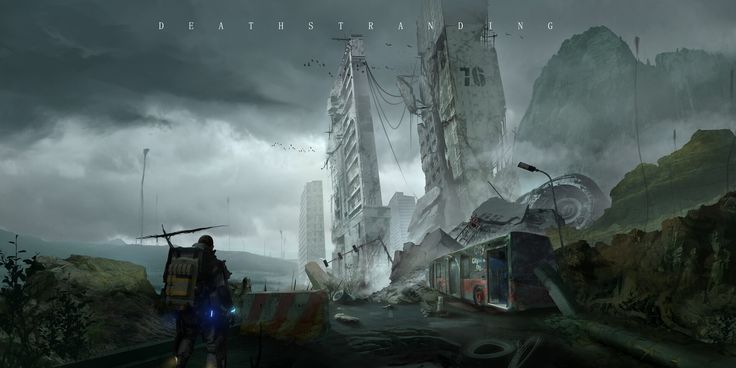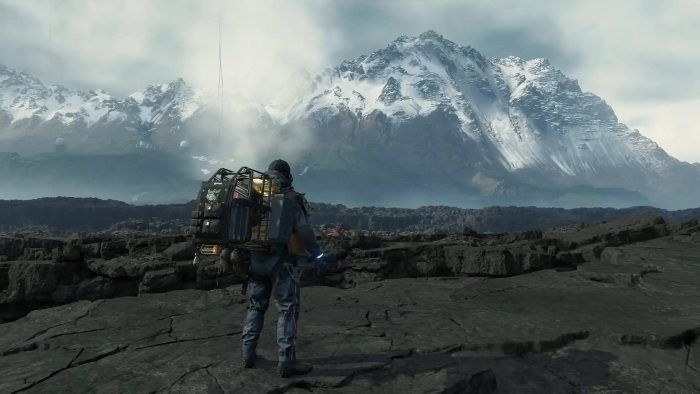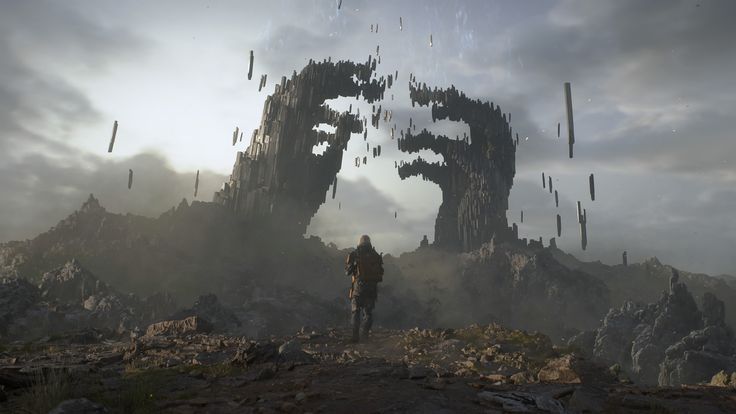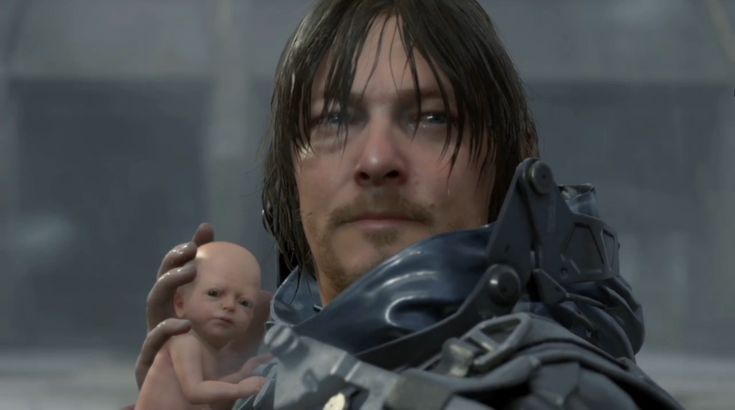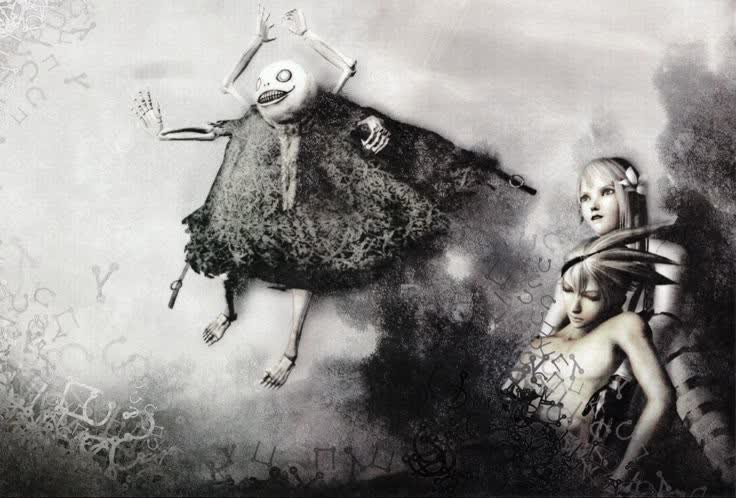The Pulse of Battle – Where Music and Metal Collide
There’s a moment in NieR: Automata—it doesn’t matter when, it could be your first boss fight or your tenth—where everything just clicks. The rhythm of your dodges, the speed of your slashes, the pulsing beat of Keiichi Okabe’s soundtrack rising like a war hymn in the background. It’s not just gameplay. It’s not just music. It’s emotion in motion.
As an old-school gamer who’s seen his fair share of epic fights—from towering colossi to demon lords—nothing hit me quite like Automata. The boss fights aren’t just obstacles; they’re operas. You’re dancing with machines that cry, scream, question their purpose. And all the while, the soundtrack doesn't just play—it bleeds into your soul. Tracks like “Bipolar Nightmare” and “Weight of the World” don’t just amplify the tension, they transform it. I’ve fought with tears in my eyes more than once—not because I was losing, but because the beauty of it all overwhelmed me.
The gameplay is fluid, responsive, and addicting. Switching between swordplay and bullet hell dodging never gets old. Every encounter feels handcrafted, every combo a brushstroke on a moving canvas of chaos and melancholy.
And that’s the magic of NieR: Automata. It doesn't just entertain—it reminds you why you fell in love with gaming in the first place. The triumphs, the heartbreak, the sheer adrenaline of fighting for something—even when you're not quite sure what that something is.
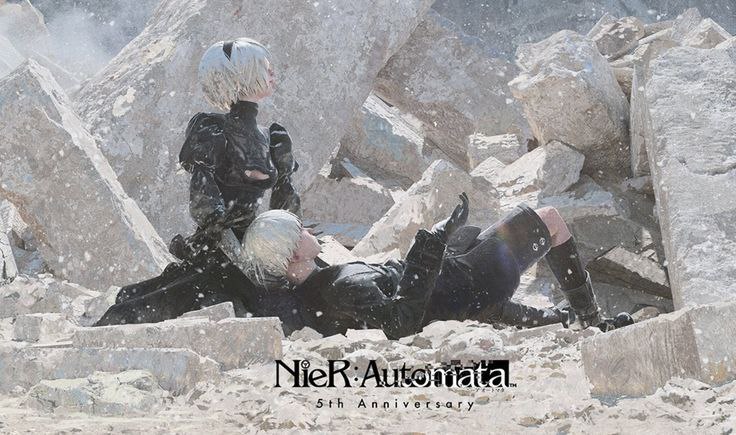
Beauty in Desolation – The Artistic and Technical Soul of NieR: Automata
It’s rare that a game makes you stop—not because you’re stuck, not because you’re frustrated, but because it’s simply too beautiful to rush through. NieR: Automata is one of those experiences. It doesn’t scream for your attention; it whispers, it lingers. And if you listen closely, it shows you a masterclass in how art, music, and mechanics can come together to speak directly to the soul.
A Soundtrack That Breathes With You
Let’s start with what haunts you long after you’ve put the controller down: the music. Keiichi Okabe didn’t just compose a soundtrack—he sculpted emotion out of sound. Tracks like “City Ruins (Shade)” don’t merely set the mood; they become characters in the story. The dynamic layering of vocals—sometimes in languages that don’t even exist—transports you into a place where words fail and only music can carry the weight of the world.
The soundtrack evolves with you. In battle, soft melodies morph into urgent symphonies, syncing with your pulse as if the music itself is fighting beside you. Then there are moments of silence, when the soundscape drops out and you’re left with nothing but the wind. That contrast—between noise and stillness—is a quiet genius that defines Automata’s emotional rhythm.
And sometimes... it breaks you. “Weight of the World,” playing during the final sequences, is not just a song. It’s a catharsis. When you hear players say they cried during the ending, they’re not exaggerating. Music is often background noise in games—but here, it is the narrative.
Visual Storytelling in a Broken World
In a post-apocalyptic world, you expect gray. You expect rubble, darkness, decay. But NieR: Automata does something extraordinary: it finds beauty in ruin. Each location, from the crumbling elegance of the Amusement Park to the cold sterility of the Bunker, is painted with a delicate touch. It’s not flashy, not crowded—just atmospheric and intentional.
The visual language of the game constantly speaks. The City Ruins feel almost peaceful, like nature reclaiming what man left behind. The Desert Zone is a canvas of endless light and silence, echoing the existential emptiness that plagues the machines. And the Forest Kingdom, overgrown and echoing with lost chivalry, reflects how even programs cling to forgotten purposes.
What truly struck me, though, was how each zone wasn’t just “another level.” It was a mood, a memory. The world doesn’t guide you with arrows—it pulls you forward with emotion. There are stories in the shadows, narratives written in forgotten temples, rusted swings, and broken machines gazing at the moon. If you rush through, you’ll miss it. But if you feel your way through the game, it rewards you with poetic stillness.
Combat as Expression
At its core, NieR: Automata is a combat game. And yet, calling it just “hack and slash” is like calling a symphony just “sound.” The combat system is elegant, layered, and incredibly responsive. You’re slicing through enemies one second, dodging bullets like it’s Ikaruga the next, then upgrading chips like it’s a full-blown RPG.
What makes the system shine isn’t just how fluid it feels—it’s how many styles it blends. You’ve got traditional hack-and-slash mechanics reminiscent of Devil May Cry or Bayonetta, complete with aerial juggles and precise dodges. But then you’ve got twin-stick shooter mechanics that pop up seamlessly during boss fights, side-scrolling sequences, and top-down bullet hell segments that blur genres entirely.
And through it all, you’re customizing your loadout with Plug-in Chips—turning UI elements into strategic tools. Want your health bar to heal faster? Equip a chip. Want to see enemy levels? That’s a chip. Want to remove the OS and die instantly? Yeah, that’s a chip too.
It’s flexible, immersive, and always evolving. Every player finds their rhythm, their build, their way to fight. And in doing so, the combat becomes more than gameplay—it becomes expression.
A Game Made with Soul
There are games that try to impress you with graphics. Others try to drown you in lore. NieR: Automata isn’t interested in either. It wants to connect. It wants to make you feel. And it does this not by yelling at you, but by trusting you—trusting that you’ll see the sadness in a machine who sings for love, the beauty in a broken world, the hope in a fight that might be meaningless.
The artistry of Automata isn’t about realism. It’s about resonance. Every note, every animation, every slow camera pan was built with intention. And for those of us who grew up with games—who remember blowing on cartridges and learning patience through pixel-perfect jumps—this game feels like a culmination of everything we’ve ever loved, distilled into one broken, beautiful journey.
So if you haven’t played it yet... you should. Not because it’s popular. Not because critics love it. But because, every once in a while, a game comes along that reminds us why we play.
And NieR: Automata is one of those games.
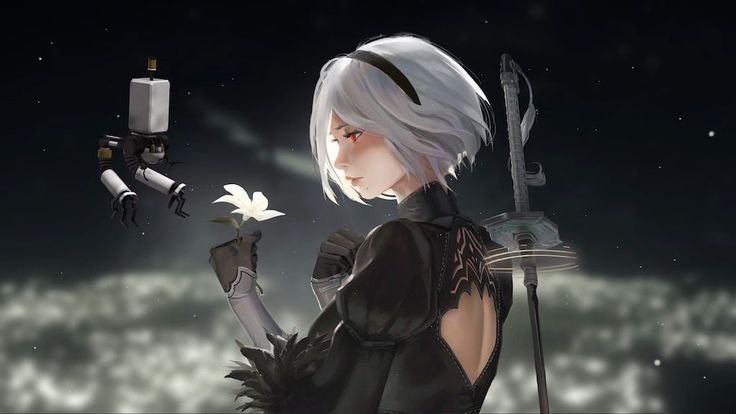
Behind the Masks – The Soul Behind NieR: Automata
Every great piece of art has a soul behind it—a team of people who pour themselves into the work, often at great personal cost, to create something unforgettable. NieR: Automata is no exception. While many players know the game for its emotional storytelling, haunting music, and razor-sharp gameplay, fewer realize the incredible journey that brought it to life, or the deeply human minds that shaped its vision.
Yoko Taro – The Man Behind the Mask
At the center of it all is Yoko Taro, the famously masked director whose interviews often oscillate between dry humor and soul-searching honesty. He doesn’t present himself like a typical game designer. He doesn’t speak about profits, engines, or graphics benchmarks. Instead, he talks about death, emptiness, and how strange it is to be alive—and that perspective is woven deeply into NieR: Automata.
Taro has often said he doesn’t like people much, but that he’s deeply interested in what they feel. It’s that paradox that gives his games their emotional depth. He’s not trying to make you comfortable. He’s trying to make you reflect. Through tragedy, through repetition, through questions that don’t always have answers.
PlatinumGames – The Dance of Combat
But NieR: Automata wouldn’t be the masterpiece it is without the action gameplay brilliance of PlatinumGames. Known for titles like Bayonetta and Metal Gear Rising, Platinum brought a level of polish and fluidity to Automata’s combat that was missing in Taro’s previous works.
Their collaboration was more than technical. It was symbiotic. Platinum’s precision combat gave the story a heartbeat. Yoko Taro’s storytelling gave the action a soul. The result? A game where gameplay and narrative don’t just coexist—they enhance each other. Fighting isn’t just about winning. It’s about feeling. About how you carry the weight of every slash, every dodge, every scream from a machine trying to be more than its code.
A Legacy of Broken Worlds
To really understand Automata, you have to look back. NieR: Replicant, the cult classic that started it all, was clunky and rough around the edges, but it meant something. It dared to tell a deeply personal story through unconventional methods—multiple endings, character deaths, even deleting your save file for someone else’s sake.
And before that, there was Drakengard. A chaotic, bizarre, often uncomfortable series that introduced Yoko Taro’s world of gods, dragons, and existential doom. These earlier games weren’t mainstream hits. They didn’t sell millions. But they resonated with a specific kind of player—the ones who wanted more than just fun. The ones who wanted to feel something real.
Automata built on those foundations. It refined the raw ambition of its predecessors into something sharp and striking. It didn’t abandon its roots—it honored them, while growing beyond them.
The Philosophy of Making Games
What makes NieR: Automata truly special isn’t just its mechanics or story—it’s the why behind it. Yoko Taro once said he makes games about things that make him sad, because that’s how he processes the world. He doesn’t believe games should always be heroic. He believes they should be honest.
He also challenges the player to participate in the story in uncomfortable ways—replaying events, sacrificing data, even questioning the very meaning of your actions. His design is less about control and more about empathy. He wants to blur the line between game and life.
A Team Effort, A Human Story
Of course, it wasn’t just Taro and Platinum. People like composer Keiichi Okabe, producer Yosuke Saito, and character designer Akihiko Yoshida each left their fingerprints on the game. Together, this team didn’t just build a world—they built a mirror. A game that reflects your own beliefs, doubts, and hopes back at you.
In the end, NieR: Automata isn’t just a product. It’s a labor of love. A strange, emotional, often painful love—but one that stays with you. It’s proof that when artists are allowed to be honest, when teams work together in harmony, and when games are made not to sell but to mean something—magic happens.
So next time you see 2B standing alone in the City Ruins, know this: she’s not just a character. She’s a message. From a team who wanted to tell the truth.

Echoes Through the Years – How Players and Critics Keep NieR: Automata Alive
It’s rare for a game to linger in your memory years after its release. Even rarer is a game that grows more beloved over time. NieR: Automata, since its debut in 2017, has done exactly that. It hasn’t faded with the passing of console generations or been drowned out by louder, flashier titles. Instead, it has carved a home in the hearts of players—and refuses to leave.
First Reactions – When Art Meets the Audience
When NieR: Automata first launched, many weren’t sure what to expect. A sequel to a cult game? Directed by a masked eccentric? A philosophical action-RPG with bullet hell sections? It sounded... strange. But that strangeness turned out to be exactly what made it unforgettable.
Critics praised it almost instantly. IGN called it “a masterclass in storytelling”, while GameSpot highlighted its “emotionally gripping world.” It was more than just a good game—it was a bold one. Reviewers admired its willingness to challenge not just gameplay norms, but emotional boundaries.
But it wasn’t just critics. Players—especially those who stuck with it through multiple endings—felt something they couldn’t always describe. A connection. A resonance. The way the music swelled as 2B fought in silence. The way machines whispered existential fears. The way the game ended... and then didn’t.
On forums, fans began writing essays. On YouTube, they made hour-long analysis videos. On Reddit, posts titled “This game changed how I see myself” began to appear. It was more than hype. It was impact.
Voices of the Community – A Chorus of Love
To this day, fans of NieR: Automata speak about it with reverence. Whether it's newcomers discovering the game for the first time or longtime fans replaying it on a new platform, there’s a recurring theme: It made me feel something real.
Many players connect with the characters not just as protagonists, but as reflections of themselves. 2B’s quiet strength. 9S’s desperate curiosity. A2’s rage turned into sorrow. These aren’t just androids—they’re emotional mirrors.
Some fans say they cried during Ending E. Others say they sat in silence, unable to move, after seeing the final credits. The message that you’re not alone—that other players around the world helped you complete your journey—was more than powerful. It was personal.
And it’s not just the emotional weight. Players also admire the gameplay, the soundtrack, and the sheer creative ambition. The way combat feels like dancing. The way the UI glitches when 2B is injured. The way the soundtrack seamlessly shifts between soft piano and operatic chaos, always in tune with your emotions.
A Platform for Everyone – NieR Across Consoles
One major reason for the game’s enduring popularity is its reach. Originally released on PlayStation 4 and PC, NieR: Automata eventually found its way to Xbox One (as the Become As Gods edition) and later the Nintendo Switch (The End of YoRHa edition).
Each new release brought a wave of new fans. The Xbox version came with added content and visual improvements. The Switch version, while scaled back graphically, still managed to capture the heart of the experience—proving that this wasn’t a game reliant on technical flash, but on emotional depth.
These multiple editions ensured that NieR: Automata was never forgotten. It kept resurfacing in gaming conversations, reviews, and award retrospectives. And every time, more players joined the journey.
Why the Love Endures – A Living Legacy
So, why does NieR: Automata still matter?
Because it respects its players.
It doesn't hold your hand. It doesn’t give you easy answers. It asks you to think, to feel, and sometimes to suffer. It gives you choice—but not always control. And that’s something deeply rare in games today.
Yoko Taro, when asked about the game’s meaning, often dodges specifics. He prefers that players interpret it on their own. “The story doesn’t belong to me anymore,” he once said. “It belongs to those who played it.” And that’s the magic. Each player walks away with their own version of Automata. It’s not one story—it’s millions.
The game has also become a beacon for deeper discussions in gaming culture. About identity. About war. About empathy. It invites not just play, but conversation—and that conversation still hasn’t stopped.
A Final Word – From Player to Player
If you’ve never played NieR: Automata, this is your invitation. Not just to play, but to feel. If you have played it, then you already know. It’s more than just a game—it’s an experience that becomes a part of you.
Years from now, when people look back at what games meant to our generation, NieR: Automata will be remembered not just for what it did—but for how it made us feel.
And that? That’s what great art is supposed to do.
Further Records Available — Ready to Discover?
Even after all that’s been revealed, echoes of forgotten truths still linger.
If you're ready… the next fragments are waiting to be found.
More articles from the world of Nier
More articles from the game Death Stranding
🎧 Dive Into the Unknown
I’ve recorded a special podcast exploring one of the many deep theories from the world of Nier. While it’s the only episode for now, there’s so much more to discover in the articles below—until the next voice finds its way to you.
